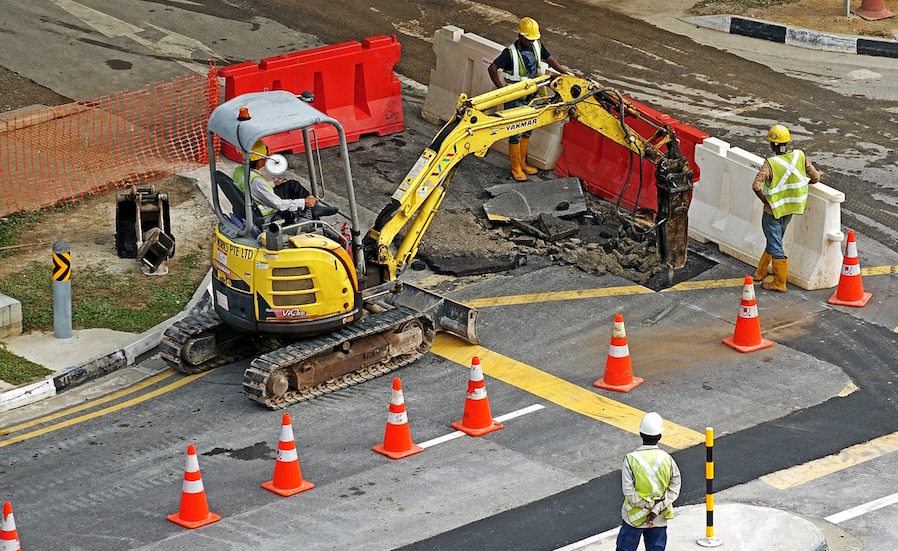Never shy during the Obama Administration about touting the results of its inspections to the media, the U.S. Occupational Safety and Health Administration has gone silent since President Donald Trump was inaugurated.
The federal workplace watchdog has not publicly announced any new safety violations by construction and other companies since Jan. 20, the day Trump took the oath of office.
OSHA, which is part of the U.S. Dept. of Labor, has long issued press releases after its inspectors find violations at various companies, everything from roofing workers failing to wear safety gear to trenches lacking cave-in protection. The releases typically contain the penalty proposed against the employer.
OSHA's sudden public silence comes amid an overall media blackout imposed by the Trump Administration on federal agencies across the board. For perspective, the U.S. General Services Administration has issued three press releases since Jan. 20, as has the U.S. Dept. of Transportation.
Trump’s nominee to lead the Labor Dept., Andrew Puzder, still awaits confirmation by the U.S. Senate. Other federal agencies are in a silent mode as new cabinet secretaries also await confirmation or settle in and embark on new policies.
The federal government doesn't have exclusive authority over jobsite safety in the U.S, where 22 states or territories have approved state OSHA plans that must equal or exceed federal standards.
But U.S. OSHA’s online press site, which typically featured as many as a dozen or more announcements per week, issued the last press release dated as of Jan. 19.
It is significant given that the agency has used press releases – and the fear of negative publicity – as a major cudgel against companies, said Eric Conn, a Washington, D.C.-based lawyer who has defended companies against OSHA allegations.
“They (OSHA) see the press releases as being more impactful than the final outcome of these cases,” Conn said. “Employers are very afraid of being blasted by OSHA in the media.”
The agency’s recent pullback from announcing the results of its inspections is not likely to upset many companies in construction or other sectors.
Unions have long been supportive of OSHA, with the AFL-CIO issuing an annual “Death on the Job” report based on statistics collected by the agency on workplace accidents and fatalities.
But the business community has been less enamored, especially when it comes to OSHA’s decision to routinely publicize safety violations, which some contend is akin to “shaming.”
Although the agency can slap from tens of thousands to millions of dollars in fines on companies found to have egregiously violated safety regulations, OSHA has long seen its ability to generate bad press as a prize weapon in its arsenal.
Future of Severe Violators Enforcement Program
However, the agency’s press policy may not be the only area that could be poised for a revamp under the new administration.
One of its more aggressive regulatory initiatives – the Severe Violators Enforcement Program – also faces an uncertain future with the arrival of a more business-friendly Trump Administration.
Like the press releases it sends out about construction firms and other companies found to have violated safety codes, the violators' program is also based in large part on publicly “shaming” companies with a history of alleged safety violations.
The number of severe violator cases opened by OSHA has jumped from 328 in 2012 to more than 700 today.
These include Susquehanna Supply, a bridge construction and repair company in Williamsport, Pa, that OSHA placed in the severe violators program in early 2016 after a worker was killed in a trench collapse. The company was later cited for not having adequate cave-in protections in the trench and for a series of safety violations going back to the 1970s.
Company officials could not be reached for comment on whether the penalty against it was contested or settled.
For companies, being labeled a “severe violator” can be a huge blow, putting everything from lines of credit to key contracts in danger.
Companies are also named to the list based on allegations, Conn argues, with a number of firms later removed after they successfully contest the charges.
While OSHA has targeted companies with multiple and repeated violations of safety regulations, critics contend the enforcement program has become a bureaucratic morass that companies are unable to free themselves from after being labeled a “severe violator.”
Exit Strategies
In order to exit the program, a company has to pay all the penalties, abate all the violations, and satisfy any other terms of the settlement. But in addition, there is a final probationary period of three years – one that doesn’t even begin until a final resolution of the charges.
During that time, the company is subject to a regime of stepped up inspections and must have a completely clean slate free of any serious related violations.
“I have seen real impacts on employers,” Conn said. “You open the door to a barrage of follow-up inspections by OSHA at all your sister locations. You are susceptible to drowning by inspection.”
Conn contends that in 75% of OSHA inspections, at least one violation is found, creating a bar firms say is almost impossible to get over to exit the program and shed the severe violator label.
More than 15 companies in construction and related fields have gone out of business since being placed on OSHA’s severe violator list.
He recalls having to plead the case on behalf of a steel erection company that was in danger of losing its biggest client, a manufacturing company, after landing on the severe violator list.
Conn said in the vast majority of cases he has taken on where companies have been placed on the severe violator list, he has been able to free them after presenting enough evidence to get the underlying citation removed. – with Scott Lewis




